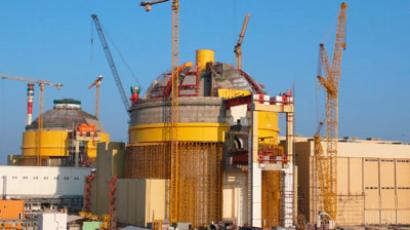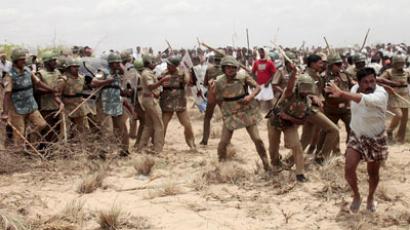India to launch nuke power plant despite protests
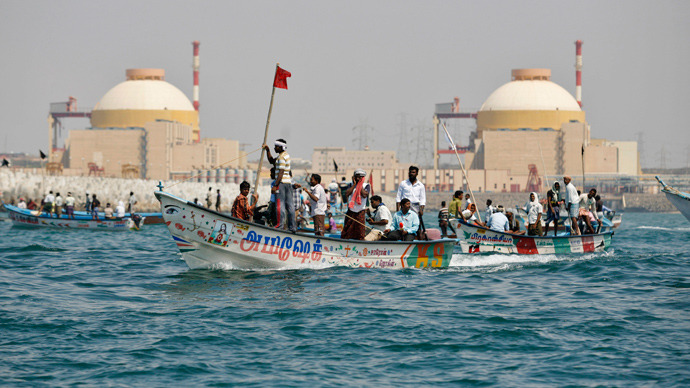
The southern Indian Kudankulam nuclear plant had the fuel loaded in reactors, and will soon start supplying the energy-poor country. The Russian-designed mega plant’s opening had been delayed by environmental protests, allegedly funded by foreign NGOs.
The largest power plant in India – and potentially the most powerful nuclear plant in the world – is due to launch the first of its two completed1000 megawatt reactors, a month after the country’s Supreme Court gave a final nod to their commissioning.
The launch of the plant comes at a time when the country is struggling to meet the vast energy shortage, RT’s Maria Finoshina reports from Kudankulam.
“There is a huge energy deficit in this particular part of the country, in the Tamil Nadu province, and across all of India. Industries are suffering. They are already queuing for energy – they need it. Of course the station will help boost things here!” Andrey Lebedev, the vice-president of the Atomenergoproekt told RT.
The latest projections from the Central Electricity Authority of India show an average energy shortfall of 6.7 per cent on the countrywide scale. But for the Southern Region the power supply is more than 19 per cent behind what it actually needs.
The power cuts are not uncommon in the country with coal-dependent energy sector, including major cities. In one of the largest of such cuts more than 600 million people had to do without electricity for two days last summer.
While the Indian people for years have been taking to the streets to protest against the shortages and to demand an effective power management, some have also been protesting against government plans to reinforce the failing energy sector with nuclear power.
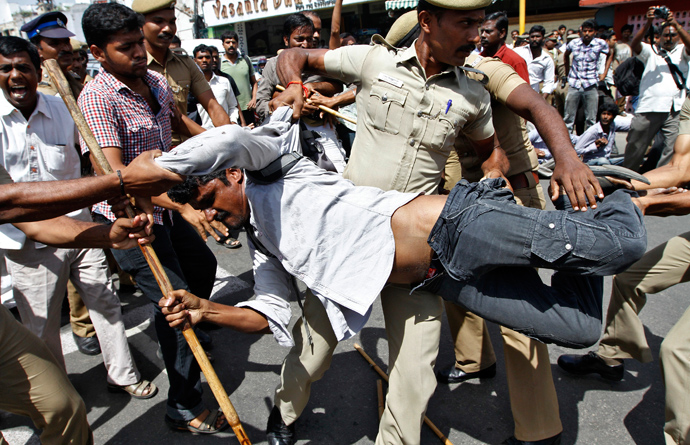
The environmental protests, involving local thousands-large demonstrations and court appeals, are believed to have delayed the Kudankulam nuclear power plant opening for years, which by 2011 had already experienced a decade of delays.
The protesters claimed the nuclear plant is “unsafe,” said it endangers environment in the region heavily reliant on fishing, and pointed at the 1 million population in the surrounding area, which would be “impossible” for the government to evacuate in case of emergency.
However, the Supreme Court of India finally ruled that the plant is “safe and secure and it is necessary for larger public interest and economic growth of the country,” adding that “India cannot afford to be a nuclear isolated nation,” and rejecting the protesters’ appeals.
The Indian government also announced that several foreign NGOs were found to be funding local activists fuelling the protests, without specifying the countries they were based in. A number of them had their licenses revoked, and dozens more were put on a watch list.
India’s Prime Minister Manmohan Singh later said he believes these NGOs were from the US and Scandinavian countries. Others blamed the foreign-funded “Christian” organizations in particular.
While some opponents simply denounced the court’s decision, with a lawyer representing the protestors calling it “an unfortunate and a terrible judgement which shows the establishmentarian mindset of the Supreme Court judges,” others said there is evidence of the country’s Atomic Energy Regulatory Board’s (AERB) failure to enforce the necessary safety measures, which the court should have taken into account.
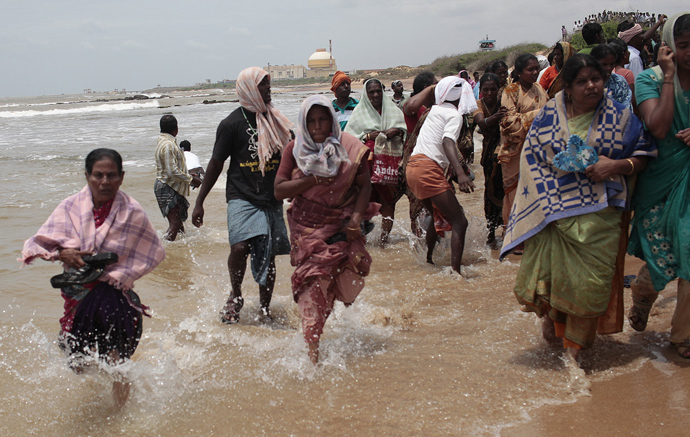
A report by the Comptroller and Auditor General of India (CAG) – the body mandated to “promote accountability, transparency and good governance” – said the AERB has a history of multiple failings to ensure the safety of nuclear installations in the country, and that it is effectively controlled by the department of atomic energy.
National nuclear energy bodies of India had come under severe public criticism before, and another French-designed plant project Jaitapur, proposed to be built on the seismically active Western coast, is being debated and protested on various levels.
But the Kudankulam plant’s designers have insisted that the Southern region station is built with the highest safety standards, and in a safe location with solid terrain, refuting Fukushima disaster-related fears. According to them, the plant’s 1.5-meter-thick protective concrete dome could withstand the impact of a large passenger jet.
“Kudankulam is the only nuclear station in the world that not only has active security features, but also the most up-to-date safety systems which activate even if the electricity supply is cut or there’s no one to control them. A repeat of the Fukushima disaster is impossible here,” deputy head of the plant construction team Aleksandr Kvasha told RT.













